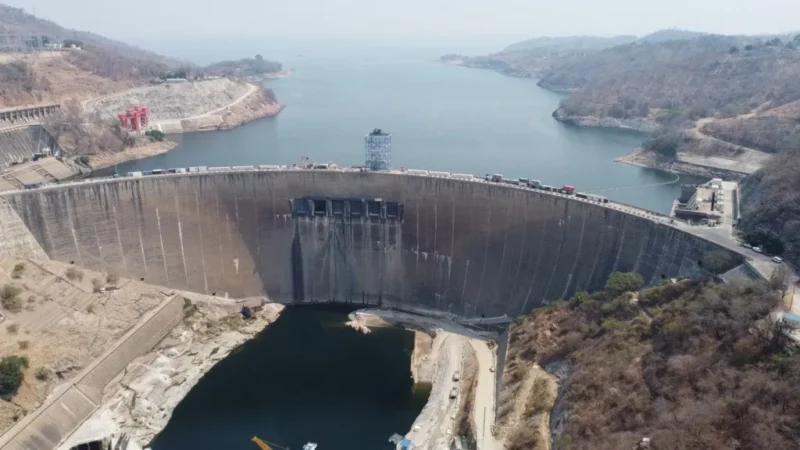Kariba is the largest man-made lake in the world by volume. It lies 200 kilometers south of Zambia’s capital Lusaka, on the border with Zimbabwe.
The massive dam wall was built in the 1950s to revolutionize the countries’ energy supplies by trapping the water of the Zambezi River, turning a valley into a huge lake while providing an endless supply of renewable hydroelectric power.
Sadly, that’s not the case anymore.
Months of drought brought by the naturally occurring El Niño weather pattern, exacerbated by global warming, have put Zambia’s hydroelectric station on the brink of completely shutting down for the first time. The majority of the 20 million people that make up Zambia’s population have had to do with only a few hours of electricity each day. In the worst-case scenarios, some areas have gone days without power.
This is particularly devastating for small businesses which make up the bulk of the country’s economy. Most of them are now forced to resort to diesel-powered generators to keep running – which runs up the cost of doing business while contributing to environmental pollution. Businesses are not the only ones having to seek alternative means of power. More and more children are being forced to read by candlelight, while households resort to alternative fuel sources for everyday needs such as cooking. Additionally, food resources are becoming more and more scarce. In March this year, Zambia declared a state of emergency over its prolonged drought. President Hakainde Hichilema said the lack of water had destroyed about one million hectares of the 2.2 million hectares planted with the staple maize crop.
Zambia’s neighbor, Zimbabwe, with which it shares the Kariba resource has also experienced massive blackouts caused by the El Nino drought. Zimbabwe’s electrical woes are lessened due to the country’s reliance on coal plants, particularly in the Hwange area. However, the recent droughts contribute to food insecurity, limited access to clean and safe drinking water in rural and urban areas, and a high incidence of waterborne diseases such as cholera and typhoid. These diseases mostly affect the rural population, which makes up the larger population of Zimbabwe. This is also where the poorest citizens live. Most of them are subsistence farmers whose livelihoods have been vastly affected by the drought. Farmers now have to walk long distances, sometimes exceeding 5km, searching for odd jobs to support their families in the town centers.
The agro-based Zimbabwean economy has been largely affected notwithstanding mitigatory measures placed by the Government and partners; which has forced the President of the Republic of Zimbabwe, Dr E.D Mnangagwa to declare a State of Disaster. According to the Zimbabwean government, the country needs at least USD 2bn to respond to the drought. At least 7.6 million people, almost half the population, need aid. The impact of El Nino on the 2023-24 farming season has left an estimated 56.8 million people in Southern Africa struggling to find food. A report by ActionAid has found that, as a consequence, families have been forced to marry off daughters in exchange for food. In many cases, these girls are also expected to rely on their husbands for food and all basic needs which may also make them vulnerable to gender-based violence.
Is there a light at the end of the tunnel?
For some, it may seem as if the situation is beyond control. While indeed the current landscape in Southern Africa is depressing, measures can be taken to lessen the impact of El Nino, at least until the droughts end, if it ends. It is not a solution to wait on nature and gaze upon the skies for the coming of the rain. Recent weather patterns, such as the flooding of parts of the Sahara Desert and the current droughts in Southern Africa point towards changing climate patterns.
Alternative sources of energy should be the priority. Investing in, and incentivizing clean energy such as solar will help combat the excessive power cuts faced by millions of people in Southern Africa and provide clean and reliable water for millions of people. At the same time, efforts should be made to secure food aid, especially for the rural population, whose livelihoods depend mostly on agriculture.
However, these solutions can only be implemented with effort and dedication from relevant authorities and stakeholders. As it stands, Africa is the lowest contributor to climate-related funding despite being the continent most affected by climate change. The reality is that most African countries cannot afford to effectively address these climate issues. Sadly, it’s the poorest of the citizens, the village and rural folk, that suffer the most. That does not mean that all hope should be lost, however.
Addressing the problem at hand takes the collective allying of everyone involved. If there ever was a time to join forces and fight for a common purpose, this is it.

